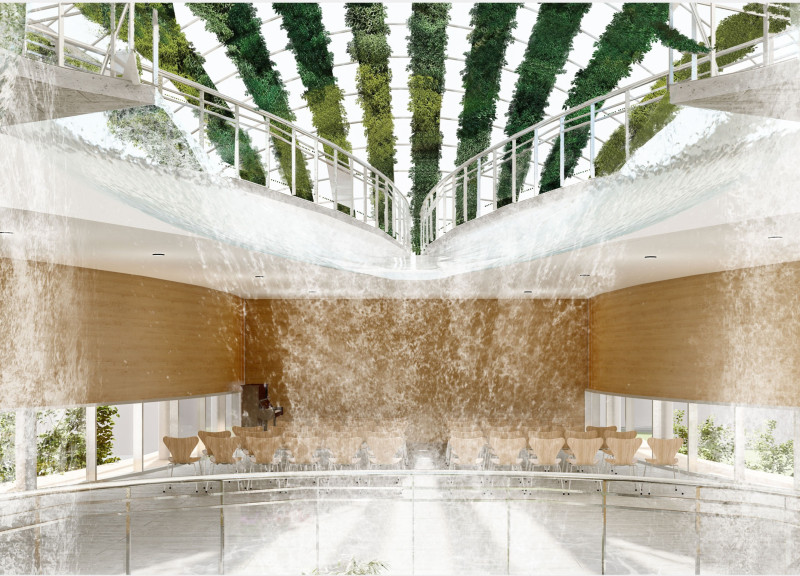5 key facts about this project
The architectural design known as "UNITY" is located within the Hua-Jiang Collective Housing in Wanhua District, Taipei. It caters to patients facing severe illnesses, creating a setting that combines spiritual caring and dignified living. The design aims to provide a peaceful escape from the surrounding city. It encourages interaction between the hospice, the community, and nature, addressing the isolation that often accompanies life-limiting conditions.
Atrium as the Heart of the Design
At the center of the design is the atrium. This space is carefully planned to make the most of natural light and sound, resulting in a calming atmosphere. The atrium acts as a multi-purpose space, functioning additionally as a chapel open to all individuals, regardless of their backgrounds. Such a focus on natural elements is important for supporting the mental health of residents, allowing time for reflection and relaxation.
Community Integration
The layout includes various shared spaces, such as dining areas, gathering rooms, and therapy areas. These spaces are crucial for promoting social connections among residents, which is particularly important during challenging times of health. By fostering interactions, the design highlights the role of community support within the hospice experience.
Connection to Nature
Footbridges and roof gardens play important roles in linking the hospice to the neighborhood. These architectural elements not only improve access but also represent how the hospice is integrated within its community. The design encourages a connection with the outdoors, which contributes positively to the overall well-being of the residents.
Natural Elements and Aesthetics
Greenery is integral throughout the hospice. This focus on incorporating plants and nature fosters a serene environment that enhances comfort and visual interest. The thoughtful arrangement of natural features creates a bond between residents and the surrounding landscape. A noteworthy aspect is how these natural elements are embedded in both communal and private spaces, enriching the daily experience of those who inhabit the hospice.



















































